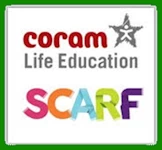Food served in some schools and academies in England must meet the school food standards so that children have healthy, balanced diets.
The school food standards apply to all maintained schools, and academies that were founded before 2010 and after June 2014. They must provide:
• high-quality meat, poultry or oily fish
• fruit and vegetables
• bread, other cereals and potatoes
There can’t be:
• drinks with added sugar, crisps, chocolate or sweets in school meals and vending machines
• more than 2 portions of deep-fried, battered or breaded food a week
![]() Whether they’re toddlers or in their teens, children develop a natural preference for the foods they enjoy the most. To encourage healthy eating habits, the challenge is to make nutritious choices appealing.
Whether they’re toddlers or in their teens, children develop a natural preference for the foods they enjoy the most. To encourage healthy eating habits, the challenge is to make nutritious choices appealing.
We aim to get children involved in growing their own food in our school garden. Children who grow their own food are more like to make healthy eating choices.
Children should be eating more whole, minimally processed food, food that is as close to its natural form as possible and less packaged and processed food.
If children are involved in shopping for groceries and preparing meals they are more likely to try new foods. Teaching them about different foods and how to read food labels a great way of finding out about healthy foods. At school we try to introduce children to different foods and flavours in their Food Technology lessons.
We realise the importance of making healthy snacks available. Fruit and vegetables are offered to our KS1 children at morning break time.
It is important to remember that children who enjoy breakfast every day have better memories, more stable moods and energy, and score higher on tests.
| Cookie | Duration | Description |
|---|---|---|
| cookielawinfo-checkbox-analytics | 11 months | This cookie is set by GDPR Cookie Consent plugin. The cookie is used to store the user consent for the cookies in the category "Analytics". |
| cookielawinfo-checkbox-functional | 11 months | The cookie is set by GDPR cookie consent to record the user consent for the cookies in the category "Functional". |
| cookielawinfo-checkbox-necessary | 11 months | This cookie is set by GDPR Cookie Consent plugin. The cookies is used to store the user consent for the cookies in the category "Necessary". |
| cookielawinfo-checkbox-others | 11 months | This cookie is set by GDPR Cookie Consent plugin. The cookie is used to store the user consent for the cookies in the category "Other. |
| cookielawinfo-checkbox-performance | 11 months | This cookie is set by GDPR Cookie Consent plugin. The cookie is used to store the user consent for the cookies in the category "Performance". |
| viewed_cookie_policy | 11 months | The cookie is set by the GDPR Cookie Consent plugin and is used to store whether or not user has consented to the use of cookies. It does not store any personal data. |
Woodford Valley C.E. Primary Academy
Middle Woodford, Salisbury
SP4 6NR
Telephone: 01722 782361
Email: office@woodfordvalley.wilts.sch.uk



